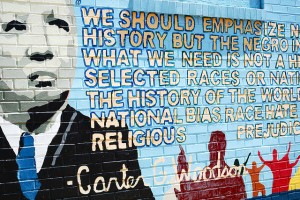
Geoffrey Fairchild / Flickr
How likely you are to be married may depend on your economic stability and income. Marriage rates today differ depending on class, according to a new study by the Brookings Institution. Here are five facts behind the marriage gap:
There’s an association between marriage status and poverty.
Children born into single-parent households are more likely to live in poverty. That’s obviously not the case for everyone, but it’s more difficult to make ends meet for those who don’t have another breadwinner in the house.
In D.C., 3.8 percent of married couples with children live in poverty. But 42.3 percent of female-headed households with children live in poverty, according to census estimates. The median income for single women with families is $33,485; for single men with families, it’s $46,670; and for married couples with families, it’s $133,338.
It’s not all bad: declining marriage rates among women are partly due to increased independence.
Women are waiting longer to get married than 40 years ago. They have more freedom to pursue careers outside of the home, more control over when they want to have children and have “the ability to be more selective when choosing a spouse,” researchers noted. In 1970, 44 percent of middle aged women had no independent earnings. Today, only 25 percent don’t make their own money.
Continue reading →











